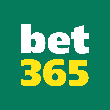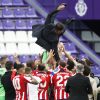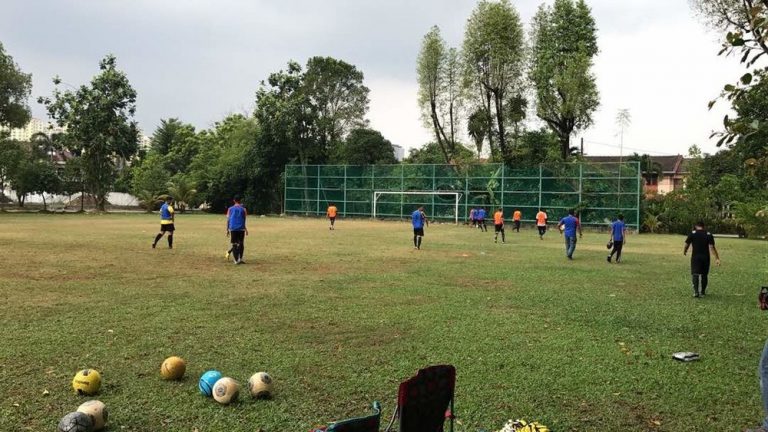
Born in the south east of Ireland, Simon put his life-long love of football to good use when he started a successful independent blog in 2010. That opened up an alternative route to a career in journalism, and having had work published across a number of sites and publications, Simon joined the staff at Spotlight Sports Group in 2018.
(Feature Image Credit: By Iklanmaju1988 (i made on my own) [GFDL (http://www.gnu.org/copyleft/fdl.html) or CC BY-SA 4.0 (https://creativecommons.org/licenses/by-sa/4.0)], via Wikimedia Commons)
In the latest entry in our Academy Analysis multi-part feature, we dissect the squads from the nations in World Cup Group D: Argentina, Croatia, Iceland and Nigeria. Below we will catalogue the academies and under age set-ups responsible for producing each player selected in the aforementioned quartet of Group D squads.
Read Parts 1, 2 & 3 first using the links below:
Part 2 of our Academy Analysis, focusing on the teams in Group B: Iran, Morocco, Portugal and Spain.
ARGENTINA
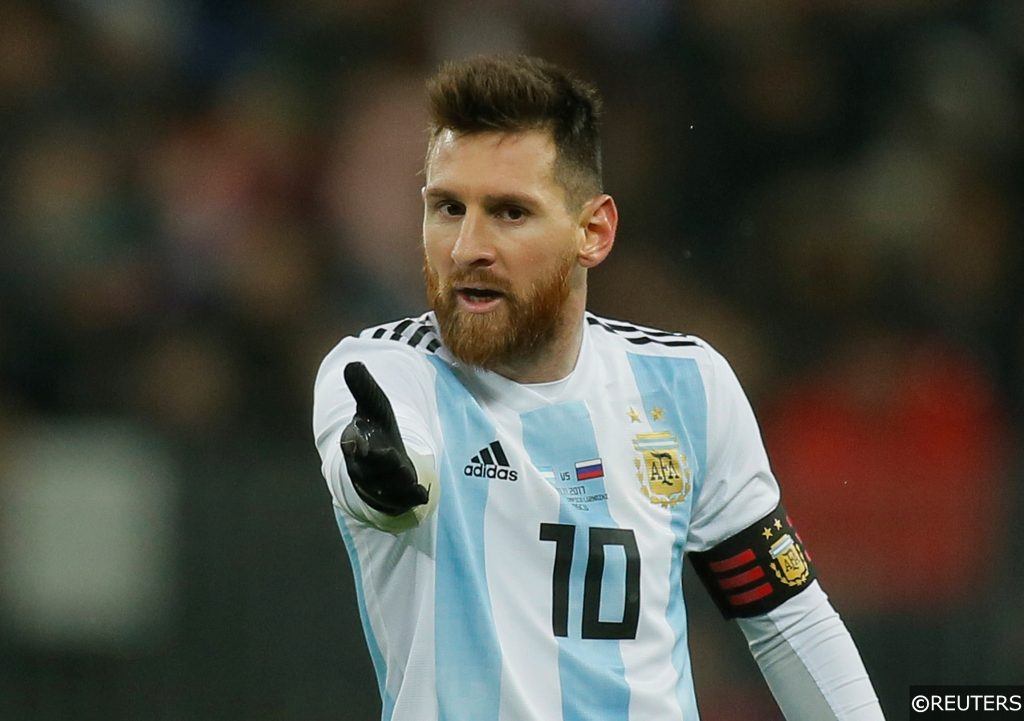
(Name of player – Name of club that produced them)
Franco Armani – Ferro Carril Oeste
Willy Caballero – Boca Juniors
Nahuel Guzman – Newells Old Boys
Nicolas Otamedi – Velez Sasfield
Federico Fazio – Ferro Carril Oeste
Marcos Rojo – Estudiantes LP
Javier Mascherano – River Plate
Gabriel Mercado – Racing Club
Nicolas Tagliafico – Banfield
Marcos Acuna – Ferro Carril Oeste
Cristian Ansaldi – Newells Old Boys
Lucas Biglia – Argentinos Juniors
Ever Banega – Boca Juniors
Eduardo Salvio – Lanus
Giovani Lo Celso – Rosario Central
Manuel Lanzini – River Plate
Angel Di Maria – Rosario Central
Maximiliano Meza – Gimnasia y Esgrima
Cristian Pavon – Talleres de Córdoba
Lionel Messi – Newells Old Boys/Barcelona
Paulo Dybala – Institutio
Gonzalo Higuain – River Plate
Sergio Aguero – Independiente
More:
The biggest names in Argentinean club football are represented to varying degrees in Jorge Sampaoli’s World Cup squad, with River Plate, Boca Juniors, Newell’s Old Boys, Rosario Central and Independiente responsible for producing 11 members of the current La Albiceleste collective.
River Plate and Newell’s Old Boys can count 3 alumni each among the Argentine roster, though their numbers are matched by little-known Primera B Nacional side Ferro Carril Oeste.
Based in the Buenos Aires barrio (neighbourhood) of Cabaillito, Ferro Carril Oeste is a club with humble beginnings and modest success. Goalkeeper Franco Armani and defensive duo Federico Fazio and Marcos Acuna all served apprenticeships under the shadows of the high-rise flats that loom over the Estadio Arquitecto Ricardo Etcheverri.
Javier Mascherano, Manuel Lanzini and Gonzalo Higuain are graduates of River Plate’s La Escuela de Fútbol, an academy celebrated for its influence on Argentinean international football. Notable former graduates include: Alfredo Di Stéfano, Daniel Passarella, Claudio Caniggia, Hernán Crespo, Matías Almeyda, Eder Alvarez Balanta, Ariel Ortega, Marcelo Gallardo, Santiago Solari, Javier Saviola, Pablo Aimar, Martín Demichelis, Andrés D’Alessandro, Radamel Falcao and Erik Lamela.
The Numbers:
Ferro Carrill Oeste, Newell’s Old Boys, River Plate – 3
Boca Juniors, Rosario Central – 2
Various – 1
Read More: World Cup 2018: Analysing Argentina’s potential starting lineup
CROATIA
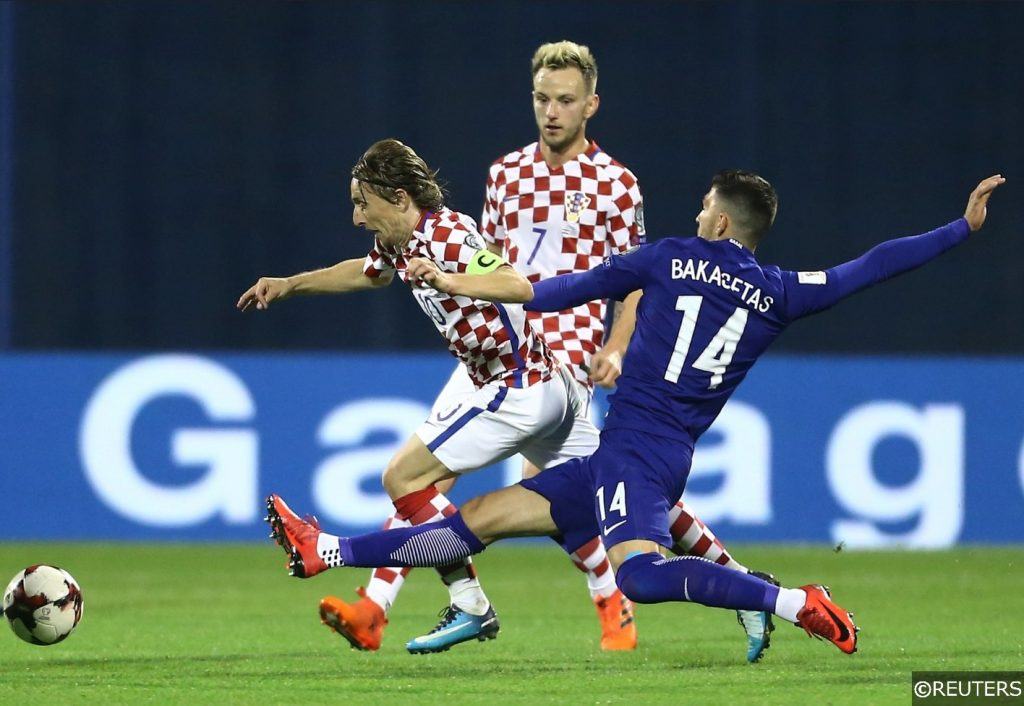
(Name of player – Name of club that produced them)
Danijel Subašić – Zadar
Lovre Kalinić – Hadjuk Split
Dominik Livaković – NK Zagreb
Vedran Ćorluka – Dinamo Zagreb
Domagoj Vida – Osijek
Ivan Strinić – Hadjuk Split
Dejan Lovren – Dinamo Zagreb
Šime Vrsaljko – Dinamo Zagreb
Josip Pivarić – Dinamo Zagreb
Tin Jedvaj – Dinamo Zagreb
Matej Mitrović – Papuk Velika/Cibalia
Duje Ćaleta-Car – HNK Sibenik
Luka Modrić – Zadar/Dinamo Zagreb
Ivan Rakitić – FC Basel
Mateo Kovačić – Dinamo Zagreb
Milan Badelj – NK Zareb/Dinamo Zagreb
Marcelo Brozović – Hrvatski Dragovoljac
Filip Bradarić – Hadjuk Split
Mario Mandžukić – TSF Ditzingen/Marsonia
Ivan Perišić – Hadjuk Split
Nikola Kalinić – Hadjuk Split
Andrej Kramarić – Dinamo Zagreb
Marko Pjaca – Dinamo Zagreb
Ante Rebić – Vinjani/RNK Split
More:
Traditionally, Croatia has produced some of the most technically gifted players in European football. The football structures in the country pull talent from a small population of just over four million with startling regularity.
Current Croatian 1. HNL champions Dinamo Zagreb have produced more national team stars than anyone else – with players like Zvonomir Boban, Zvonimir Soldo, Dario Šimić, Niko Kranjčar and Robert Prosinečki coming through the club’s Hitrec-Kacian academy.
According to the CIES (International Centre for Sports Studies), Dinamo Zagreb produced the third highest number of players that participated in the 2014 World Cup finals in South Africa.
In Croatia’s squad for this summer’s World Cup, no fewer than 10 players can point to a footballing education at the Hitrec-Kacian. 5 members of Zlatko Dalić ‘s squad were coached in Dinamo Zagreb’s domestic rivals Hadjuk Split’s youth set-up.
In fact, the two clubs can account for the development of 62% of the entire Croatian World Cup squad. Dinamo Zagreb’s and Hadjuk Split’s impact on Croatian international football is considerable at under-age level too. In last year’s U17 European Championships, 13 of the 18 players picked to play for Croatia came from either the Dinamo or Hadjuk academies.
The Numbers:
Dinamo Zagreb – 10
Hadjuk Split – 5
Zadar, NK Zagreb – 2
Read More: World Cup 2018: Can Croatia’s midfield finally inspire success?
ICELAND
(Name of player – Name of club that produced them)
Hannes Þór Halldórsson – Leiknir R.
Frederik Schram – Odense Boldklub
Rúnar Alex Rúnarsson – FC Nordsjaelland
Birkir Már Sævarsson – Valur
Samúel Friðjónsson – Keflavik/Reading
Sverrir Ingi Ingason – Breidablik
Ragnar Sigurðsson – Fylkir
Kári Árnason – Vikingur
Hólmar Örn Eyjólfsson – HK
Hörður Björgvin Magnússon – Fram/Juventus
Ari Freyr Skúlason – Valur/Heerenveen
Jóhann Berg Guðmundsson – Breidablik
Birkir Bjarnason – Figgjo
Gylfi Sigurðsson – Breidablik/Reading
Ólafur Ingi Skúlason – Fylkir/Arsenal
Aron Gunnarsson – Por Akuryri
Rúrik Gíslason – HK
Emil Hallfreðsson – FH
Arnór Ingvi Traustason – Keflavik
Albert Guðmundsson – KR/PSV
Björn Bergmann Sigurðarson – IA
Alfreð Finnbogason – Grindavik/Breidablik
Jón Daði Böðvarsson – Selfoss
More:
Iceland’s emergence as a top level international footballing nation over the past half a decade defies logic. When they qualified for the European Championships in 2016, they came the smallest nation to ever qualify for a major tournament.
With a population totalling just over 350,000, the odds of producing enough players of the required level to compete are understandably long. As recently as 2002, there were only 5 artificial grass pitches, 1 indoor football hall (for training in adverse conditions), and 7 mini-pitches on the entire island.
A concerted effort from the Icelandic government radically improved the facilities at grass roots level, while an increase in the number of UEFA qualified coaches in Iceland helped to complement the structural enhancements. That combination of physical renovation and an upgrade in coaching standards helped to shape the Icelandic team you see today.
Breidablik, based in Kópavogur south of the capital Reykjavik are a club that epitomises the positive strides made by Icelandic football in recent years. The club plays in the Úrvalsdeild karla, at the top of the Icelandic football period, though they remain a semi-professional outfit.
Breidablik’s youth training HQ resembles an airport hanger from the outside, though behind the walls of the sheer exterior is a first-class development centre. 4 of the current Iceland World Cup squad were trained there including Everton’s Gylfi Sigurðsson and Burnley’s Jóhann Berg Guðmundsson.
The Numbers:
Breidablik – 4
Valur, Keflavik, Fylkir, – 2
Various – 1
NIGERIA (Preliminary 29-man squad)
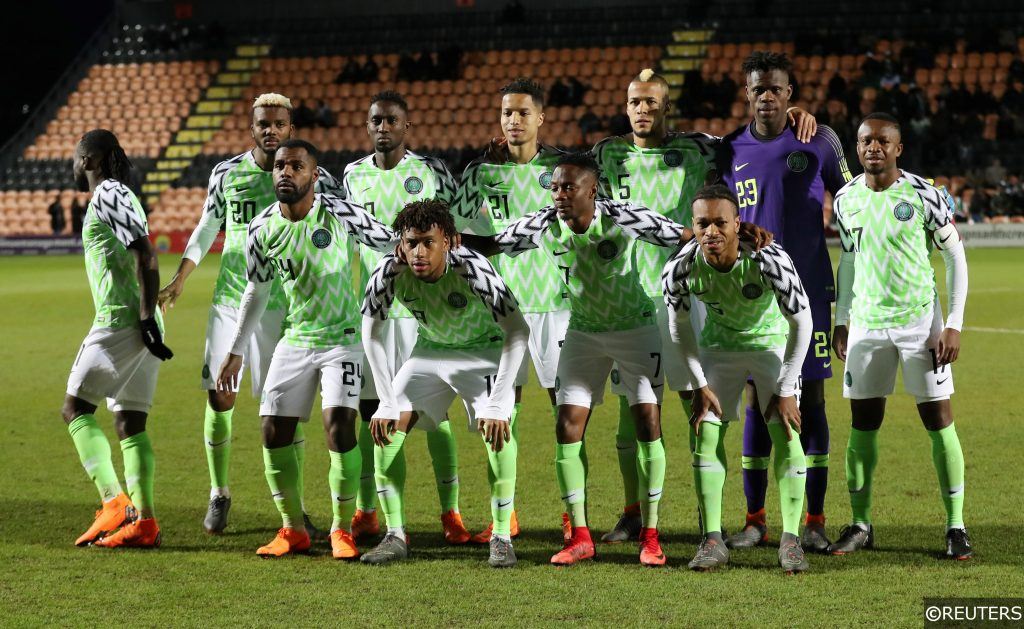
(Name of player – Name of club that produced them)
Ikechukwu Ezenwa – Ocean Boys FC
Daniel Akpeyi – Gabros International
Francis Uzoho – Aspire Academy
Dele Ajiboye – Prime FC
William Troost-Ekong – Fulham/Tottenham Hotspur
Leon Balogun – Hertha BSC
Ola Aina – Chelsea
Kenneth Omeruo – Hard Foundation
Brian Idowu – Zenit St Petersburg
Chidozie Awaziem – El-Kanemi Warriors/Porto
Shehu Abdullahi – Plateau United
Elderson Echiéjilé – Wikki Tourists
Tyronne Ebuehi – ADO Den Haag
Stephen Eze – Lobi Stars
John Obi Mikel – Plateau United
Ogenyi Onazi – El Kanemi Warriors
John Ogu – Akwa Starlets
Wilfred Ndidi – Nath Boys Academy
Uche Henry Agbo – Bai Boys
Victor Moses – Crystal Palace
Alex Iwobi – Arsenal
Oghenekaro Etebo – Warri Wolves
Joel Obi – Internazionale
Mikel Agu – Porto
Odion Ighalo – Prime
Ahmed Musa – GBS Football Academy
Kelechi Iheanacho – Taye Academy/Man City
Junior Lokosa – First Bank
Simeon Nwankwo – Portimonense
More:
The footballing origins of the players selected for Nigeria’s preliminary 29-man World Cup squad are as varied as the clubs they currently play for. However, 19 of the 29 squad members were coached as youngsters at clubs inside Nigerian borders.
With a population of somewhere around 193 million, Nigeria has been an exporter of football talent for generations. Their World Cup squad reflects that, with just 3 of the players picked by German Coach Gernot Rohr currently playing their football in the Nigerian Professional Football League.
Nigeria have enjoyed fabulous success at under-age level on the international stage. There have been 17 international FIFA Youth Championships in various guises since 1985 and Nigeria have won 5 of them, including the 2007, 2013 and 2015 titles. They also finished as runner-up another 3 times in 1987, 2001 and 2009.
Determining the reasons as to why The Super Eagles haven’t been able to transfer their junior success to senior level is a difficult task, though it’s worth noting that just 1 of their 21-man 2007 FIFA U17 World Cup winning squad (Dele Ajiboye) is in Rohr’s selection for Russia. That means 20 talented players have been lost somewhere along the way.
Similarly, members of their 2013 FIFA U17 World Cup winning team, who are all in their early twenties now, are poorly represented in this year’s senior ranks. Francis Uzoho and Kelechi Iheanacho are the only two players to have stayed the course. To complete the set, none of their most recent 2015 U17 world champions made the cut for Russia either. Whatever the reasons, there seems to be a massive amount of potential going unfulfilled in Nigeria.
The numbers:
Prime FC, Plateau United, El-Kanemi Warriors Porto – 2
Various – 1
Read more: Revisiting the Golden Age of the French National Team
Follow Free Super Tips on Twitter to stay up to date with our daily tips and predictions or browse more football content on our website:
